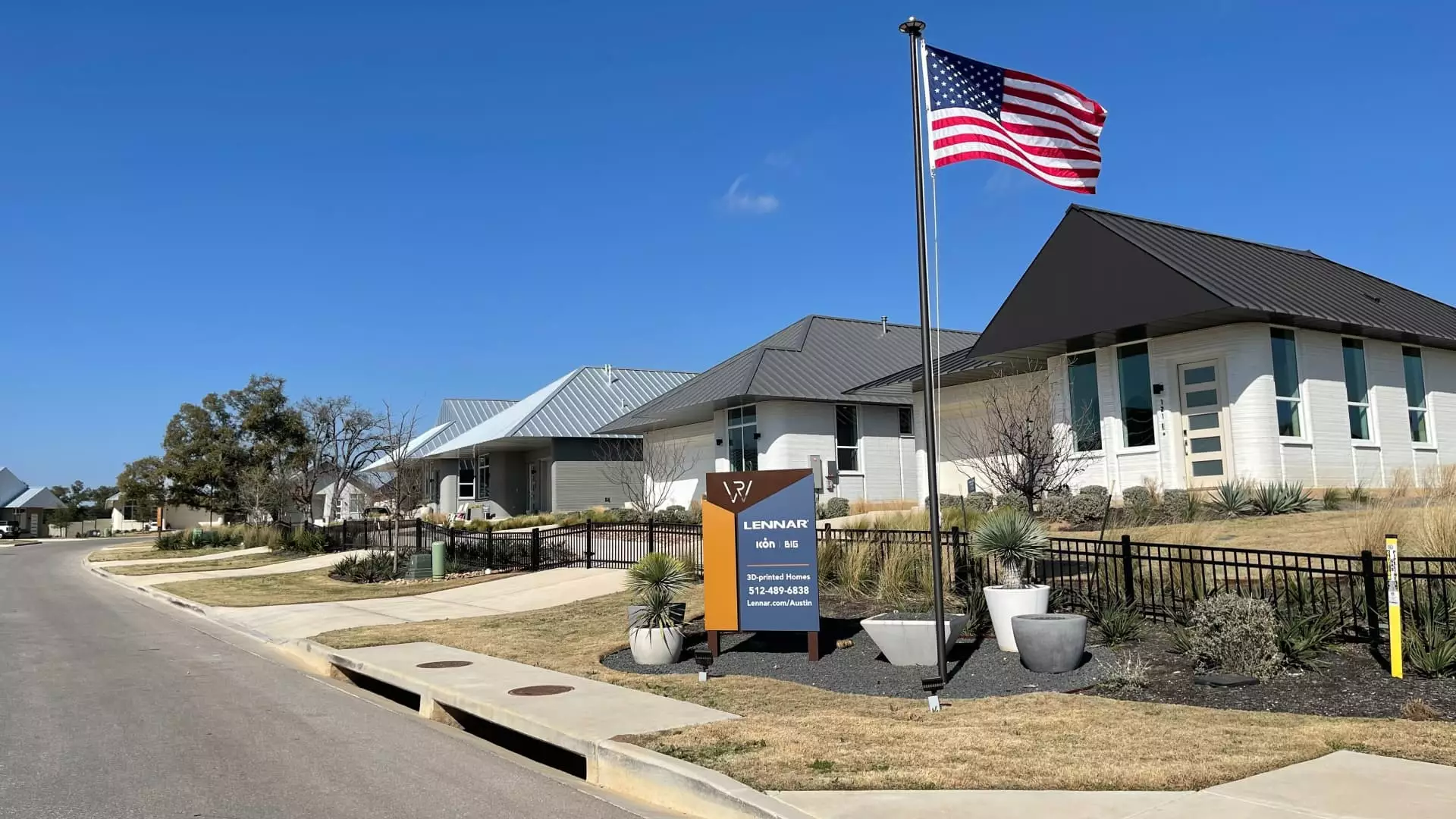The homebuilding landscape is undergoing a seismic shift, with traditional models being challenged by innovative methods aimed at solving escalating housing shortages. Recently, a remarkable transformation took place just outside Austin, Texas, in a subdivision that has captured the attention of not just local residents, but the entire nation. The integration of 3D printing technology marks a groundbreaking step in modern construction, particularly through the ambitious project developed by Lennar and Icon. The opening of the world’s largest 3D-printed community symbolizes more than just a novel housing solution; it represents a crucial opportunity to address some of the most pressing challenges within the real estate market.
As the second-largest homebuilder in the U.S., Lennar has leveraged its robust resources by teaming up with Icon, a company specializing in advanced 3D printing technologies. This collaboration allowed these two industry giants to print 100 homes in the Wolf Ranch development, and the rapid uptake—75% of the homes sold in a remarkably short time—demonstrates the appetite for innovative housing solutions. This success has broad implications, suggesting that the public is not only ready for change but is eager to embrace it.
Functionality Meets Aesthetics
At first glance, the design of these homes may come across as unconventional, with rounded walls and a unique surface texture reminiscent of corduroy. However, beneath this modern exterior lies thoughtful engineering aimed at ensuring durability and energy efficiency—a marriage of aesthetics and function that appeals to a diverse range of homebuyers. Importantly, these homes incorporate solar power, a feature increasingly sought after as energy prices rise and environmental concerns gain traction among consumers.
Holly Feekings, a resident in this community, highlights the significant benefits she experiences, particularly in terms of utility costs. A mere $26 electric bill speaks volumes about the home’s energy efficiency—both a financial relief and an illustration of how modern construction can lead to sustainable living. This strikes a chord with a growing audience that prizes environment-friendly solutions alongside economic viability.
A Game-Changer in Construction Speed
The efficiency of 3D printing technology cannot be overstated, especially in a world fraught with housing shortages. The machines utilized in Wolf Ranch have demonstrated an impressive capability, performing jobs that would traditionally require the labor of numerous construction workers. Icon’s shift from two to eleven printers within the course of the project speaks not only to technological advancement but also to a strategic commitment toward scalability. The result? Homes are produced in weeks rather than months—an evolution that could fundamentally change the previously stagnant timelines associated with traditional construction.
Such speed translates to meeting the heightened demand for affordable housing, fundamentally reshaping the market landscape. Given the ongoing concerns about rising housing costs, the introduction of efficient construction methods could be a pivotal factor in ensuring accessibility to homeownership for many more families.
Transforming Challenges into Opportunities
From a center-right perspective, there lies a philosophical consideration regarding the implications of 3D printing in the housing sector. Empowering the average American to access homeownership is a worthwhile endeavor that can bolster economic growth and enhance community stability. While certain initial costs associated with the innovation may appear daunting, the long-term benefits—decreased building costs, improved energy efficiency, and an expanding market for affordable housing—can serve as a powerful catalyst for local and national economies.
Lennar and Icon’s collaborative journey underscores the potential these companies see in this technology. By learning from the initial investment, they are able to approach future projects with increased knowledge—lessening costs while simultaneously upping the ante on quality and speed.
The Future of Housing: Local Materials and Resilience
In a context where international trade dynamics frequently shift, especially concerning tariffs and supply chains, the decision to source materials domestically is a significant advantage. Using stateside concrete minimizes the risks associated with fluctuating import costs and ultimately facilitates more reliable construction processes. This homegrown focus not only embodies a commitment to local economies but also serves as a pragmatic response to the challenges presented by global trade tensions. Stability in supply chains leads to stability in housing markets, ensuring that innovative communities can thrive amidst uncertain landscapes.
Potential expansions of 3D-printed communities, as indicated by Lennar and Icon’s plans for a subsequent project, signify a promising leap forward. With aspirations for even faster and less expensive construction of larger homes, this trend is likely to set the stage for a new norm in housing development that could very well define future real estate markets.
The adaptation of 3D printing in residential construction presents a host of possibilities that resonate beyond mere roof-and-walls realities. It’s a statement on ingenuity, economic responsibility, and an invigorated approach to solving perpetually growing housing dilemmas.

